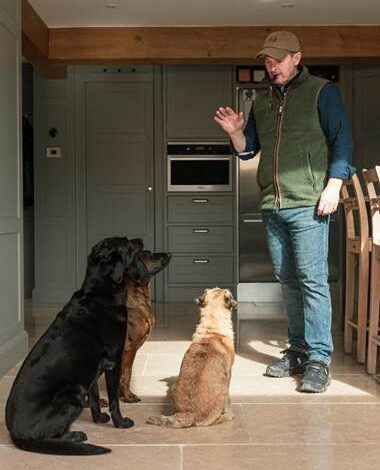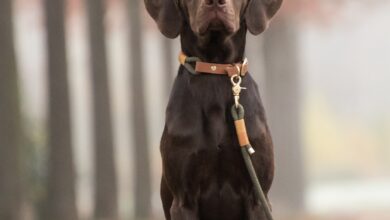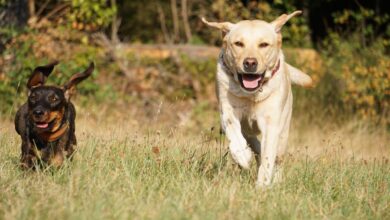Expert Trainer’s Whistle Secrets for ‘Best in Show’ Success
Unleash your Labrador’s potential

An award-winning dog trainer is providing pet owners with essential advice on how to master the basics of whistle training, laying the groundwork for their dogs to become “best in show” when out and about.
With Crufts being hosted in Birmingham this week, Ben Randall – Gundog Trainer of the Year, double British Cocker Championship winner, Kennel Club-approved judge, and trainer to renowned celebrities, has partnered with the dog training experts at ACME Kennels to help owners to utilise a whistle to teach their dogs basic commands.
In their experience, using a whistle helps dogs to master listening by learning to respond to their owner’s commands, paving the way for a better behaved, happier dog as well as building a strong bond with their owner.
Ben claims that a whistle is the most effective tool for capturing a dog’s attention and should be considered essential for effective training. However, he stresses the importance of understanding the fundamentals first.
Top tips from the trainer include mastering basic whistle commands, such as recall and stay, using positive reinforcement, and producing a consistent sound that can be heard at any distance.
He said: “I frequently hear the question, why use a whistle instead of calling, shouting, or chasing my dog? Well, I think it’s pretty obvious we don’t want to shout at or chase after our dogs.
“We want to use the whistle, a powerful tool in a positive and rewarding manner, ensuring that the dog responds effectively in any environment, whether it’s a playful setting or a situation where safety requires us to bring the dog back.
“The whistle for me, my dogs and my clients are an essential tool for training your dog.”
From using positive rewards to avoiding panic blowing, the ACME Kennels team asked the expert to reveal his top tips to help owners understand the basics of whistle training:
Understand the Power of a Positive Reward
“For me, the whistle should always be followed by a positive reinforcement. It should make the dog think, ‘I just heard something important!’
“When the dog responds quickly, it should receive a reward, whether that’s food, praise from the owner, or a beloved toy.
“This approach encourages the dog to respond promptly to the whistle, regardless of the environment or distractions.”
Nail the Basic Commands
“I’d like to share some advice on the most basic commands I’ve used for decades in highly distracting environments.
“It’s always important to be quiet, consistent, and calm when using the whistle.
“For recall, use three or four short pips to signal your dog to return safely.
“Once your dog comes back, you can use a single blast on the whistle to ask them to sit and stay.”
Create Consistent Sound at any Distance
“I want the sound to be very similar at extended ranges as it is up close. The question is: why create a loud sound here if I need it to carry to the dog at distances of 20, 50, or even 100 meters? When I blow it at a volume of ten here, it won’t sound the same at that distance.
“That’s why I prefer to blow the whistle softly at close range and maintain that soft volume at 20, 30, or 40 meters. This way, when the dog hears it from a distance, it recognizes the sound as familiar- it’s a sound they are used to hearing consistently.
“Importantly, it’s a sound that the dog will recognize and respond to positively and rewardingly when they are close, and it’s exactly the same sound they hear from a distance.
“This consistency is crucial for effective training with my dogs.”
Avoid Panic Blowing
“If your dog isn’t responding to a normal blow of the whistle, it likely means they haven’t been trained properly. For those who tend to panic blow the whistle, it’s crucial to stay calm.
“Retrain your dogs to listen to the whistle in a positive, rewarding way so they genuinely want to respond. The whistle should not be used as a panic button or an ABS brake; it’s intended to provide a consistent sound that encourages positive behaviour.
“When using the whistle, remember that the louder you blow it up close, the louder it needs to be at a distance, which can affect how the dog perceives the sound. Panic blowing distorts the sound, making it unrecognisable to the dog.
“I’ve successfully demonstrated this with dogs of all breeds, showing that when trained correctly, they will stop and listen for assistance.”






